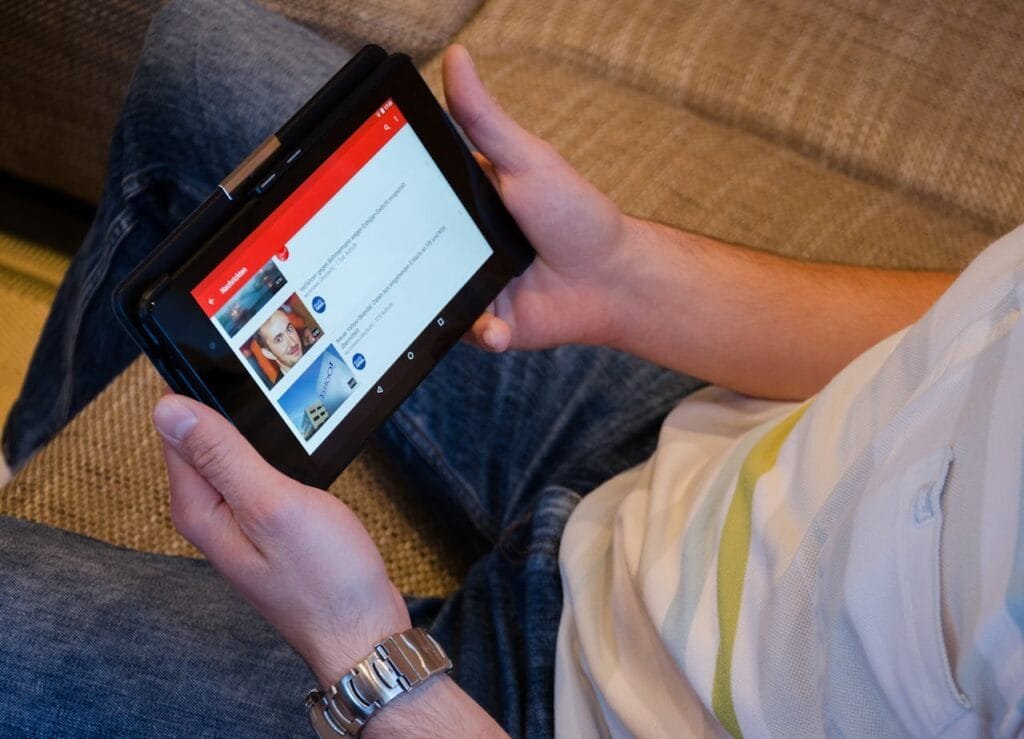In today’s competitive business landscape, having the right marketing materials is crucial for success. These materials help you convey your brand message, attract customers, and build lasting relationships. Whether you’re a startup or an established business, understanding and utilizing essential marketing materials can make a significant difference.
Understanding Your Brand
Defining Your Brand Identity
Before creating any marketing materials, it’s essential to define your brand identity. Your brand identity includes your business’s values, mission, and personality. It’s what sets you apart from competitors and makes your business unique.
Spend time crafting a clear and compelling brand message that resonates with your target audience. Think about what your brand stands for and how you want to be perceived. Are you innovative and cutting-edge, or traditional and reliable?
Understanding your brand identity will guide all your marketing efforts and ensure consistency across all materials.
Creating a Visual Identity
Your visual identity includes your logo, color scheme, typography, and overall design aesthetic. These elements should reflect your brand’s personality and make a lasting impression on your audience.
Invest in professional design services to create a logo that is memorable and versatile. Your logo will be used on all marketing materials, so it’s crucial that it looks good in various sizes and formats.
Choose a color scheme that aligns with your brand message. Colors evoke emotions and can influence how your audience perceives your brand.
Consistent use of colors, fonts, and design elements will create a cohesive and professional look across all your marketing materials.
Printed Marketing Materials
Business Cards
Despite the digital age, business cards remain a vital marketing tool. They are often the first impression potential clients have of your business. Ensure your business card design is simple yet impactful, including essential information like your name, title, contact information, and logo.
A well-designed business card can leave a lasting impression and make it easy for people to reach out to you. Consider using high-quality paper and unique finishes like embossing or foil stamping to make your business card stand out.
A memorable business card can spark conversations and serve as a reminder of your brand.
Brochures and Flyers
Brochures and flyers are versatile marketing tools that can provide detailed information about your products or services. They are ideal for events, trade shows, or direct mail campaigns.
A well-designed brochure can showcase your offerings in a visually appealing way, helping to educate potential customers and drive sales. When designing brochures and flyers, focus on clear and concise messaging.
Use high-quality images and graphics to highlight key points and make the content engaging. Include a strong call to action, encouraging readers to contact you or visit your website for more information.
Posters and Banners
Posters and banners are excellent for promoting events, sales, or new products. They grab attention and can be strategically placed in high-traffic areas to reach a large audience.
A striking design with a clear message can draw people in and create interest in your business.
Make sure your posters and banners are visually appealing and easy to read from a distance. Use bold fonts, vibrant colors, and eye-catching graphics to make your message stand out.
Include essential information like dates, locations, and contact details so that interested individuals know how to take the next step.
Digital Marketing Materials
Developing a Robust Content Marketing Strategy
Content marketing is essential for establishing your business as an authority in your industry. Develop a comprehensive content strategy that includes a mix of blog posts, videos, infographics, and social media updates.
Focus on creating high-quality, valuable content that addresses your audience’s pain points and provides actionable solutions.
Website
Your website is the cornerstone of your digital presence. It’s where potential customers go to learn more about your business, browse your offerings, and contact you. A professional, user-friendly website can significantly impact your credibility and conversion rates.
Ensure your website is easy to navigate, with clear sections for different types of information. Optimize it for mobile devices, as a significant portion of web traffic comes from smartphones and tablets.
High-quality content, including blog posts, product descriptions, and customer testimonials, can boost your SEO and provide valuable information to visitors.
Social Media Profiles
Social media is a powerful tool for connecting with your audience and building brand awareness. Create profiles on platforms where your target audience is most active. Consistently update your profiles with engaging content that reflects your brand’s voice and values.
Visual content performs well on social media, so share photos, videos, and graphics that showcase your products or services.
Engage with your followers by responding to comments and messages, and use social media to drive traffic to your website or promote special offers.
Creating a Comprehensive Social Media Plan
A well-rounded social media plan is crucial for building brand awareness and engaging with your audience. Identify which platforms your target audience frequents the most and focus your efforts there.
Develop a content calendar to plan and schedule your posts, ensuring a consistent presence.
Email Newsletters
Email marketing is an effective way to stay in touch with your audience and nurture leads. Regularly send out newsletters with updates, promotions, and valuable content. Make sure your emails are visually appealing and mobile-friendly.
Personalize your emails to make your subscribers feel valued. Use their names and segment your list to send targeted content based on their interests and behaviors.
Include clear calls to action, encouraging recipients to visit your website, make a purchase, or contact you for more information.
Utilizing Webinars and Online Workshops
Webinars and online workshops are powerful tools for engaging with your audience and showcasing your expertise.
These interactive formats allow you to provide in-depth knowledge on specific topics, answer questions in real-time, and build a personal connection with your audience.
Visual Marketing Materials

Developing a Visual Branding Guide
Creating a visual branding guide is essential for maintaining consistency across all your marketing materials. This guide should outline your brand’s visual elements, such as your logo, color palette, typography, and imagery style.
Consistency in these elements helps build brand recognition and trust among your audience.
Start by defining your brand’s core colors and ensure they are used uniformly across all materials. Choose a set of fonts for different purposes, such as headlines, body text, and captions.
Specify the types of images and graphics that align with your brand’s personality, whether they are professional photos, illustrations, or stock images.
Providing clear guidelines on how to use these elements ensures that anyone creating marketing materials for your business adheres to the same standards.
Creating Engaging Slide Decks
Slide decks are powerful tools for presentations, pitches, and webinars. An engaging slide deck can help you effectively communicate your message and keep your audience interested. Focus on clean, uncluttered designs that highlight your key points.
Use high-quality images, charts, and infographics to support your message. Keep text to a minimum and use bullet points sparingly to avoid overwhelming your audience. Practice your presentation to ensure smooth delivery and engage with your audience by encouraging questions and discussions.
Tailor each slide deck to its specific purpose and audience. For investor pitches, focus on financials and growth potential. For customer-facing presentations, emphasize benefits and success stories.
Always end with a strong call to action that directs your audience to the next steps.
Designing High-Impact Print Ads
Print ads can still be highly effective, especially in niche markets and local advertising. Designing a high-impact print ad requires a clear understanding of your audience and a compelling message that grabs attention.
Focus on a strong headline that immediately conveys the main benefit of your product or service. Use high-quality images that are relevant and eye-catching. Ensure your ad has a clear call to action, such as visiting your website, calling for a consultation, or visiting a store.
Consider the placement of your print ads. Local newspapers, magazines, and industry publications can provide targeted exposure. Measure the response to your print ads through unique URLs, QR codes, or specific promotional codes to track effectiveness.
Crafting Unique Packaging Designs
If your business involves physical products, unique packaging designs can significantly enhance your brand’s appeal.
Packaging is often the first physical touchpoint with your customers, so it should reflect your brand’s values and quality. Invest in professional packaging design that stands out on the shelves. Use sustainable materials if possible, as eco-friendly packaging can attract environmentally conscious consumers.
Ensure that your packaging is not only visually appealing but also functional and protective. Incorporate your branding elements, such as your logo and colors, into the packaging design. Provide clear and concise information about the product and its benefits.
Adding a personal touch, such as a thank-you note or a small freebie, can enhance the customer experience and encourage repeat purchases.
Utilizing Augmented Reality (AR)
Augmented Reality (AR) is an innovative way to enhance your visual marketing materials. AR can bring your printed materials, product packaging, and even store displays to life by adding a digital layer of information and interactivity. Develop AR experiences that provide additional product information, demonstrations, or interactive features.
For example, a furniture store could use AR to show how a piece of furniture would look in a customer’s home. A beauty brand could use AR to allow customers to virtually try on makeup.
Promote your AR features through your marketing channels and provide easy instructions for customers on how to access them. AR not only creates a memorable experience but also helps customers make more informed purchasing decisions.
Creating High-Quality Photography and Videography
High-quality photography and videography are essential for making a strong visual impact. Invest in professional photography for your products, team, and events. High-resolution images can be used across your website, social media, print materials, and advertising campaigns.
Video content is highly engaging and can be used for various purposes, such as product demos, customer testimonials, behind-the-scenes looks, and promotional videos. Ensure your videos are well-produced with clear visuals and sound. Keep them concise and focused on delivering value to your audience.
Leverage user-generated content by encouraging your customers to share their photos and videos using your products. Feature this content on your social media channels and website to build community and authenticity.
Designing Impactful Digital Banners and Ads
Digital banners and ads are critical for online advertising campaigns. Design impactful ads that capture attention and drive clicks. Use bold visuals, concise copy, and a strong call to action.
Tailor your ads to the specific platform they will appear on, whether it’s Google Display Network, social media, or third-party websites. Consider different formats, such as static banners, animated GIFs, or interactive HTML5 ads, to enhance engagement.
Regularly test different ad variations to see which ones perform best. Use A/B testing to compare headlines, images, and calls to action.
Analyze the performance data to optimize your campaigns and maximize ROI.
Creating Engaging Storyboards for Video Production
Storyboarding is a crucial step in video production that ensures your videos are well-planned and effective. A storyboard outlines each scene, including visuals, dialogue, and actions, providing a clear roadmap for the video shoot.
Start by defining the purpose and target audience of your video. Sketch out each scene with notes on the visual elements, camera angles, and any text or graphics that will appear on screen.
Include notes on the script and any voiceover or dialogue.
A detailed storyboard helps streamline the production process, ensuring that everyone involved understands the vision and direction of the video.
It also helps identify potential issues before the shoot, saving time and resources.
Leveraging Custom Illustrations and Graphics
Custom illustrations and graphics can set your brand apart and add a unique touch to your marketing materials. Use custom graphics to explain complex concepts, add visual interest to your content, and create a cohesive brand aesthetic.
Work with professional illustrators to develop a style that aligns with your brand’s personality. Use these illustrations across your website, social media, presentations, and print materials to create a consistent and engaging visual identity.
Custom graphics can also enhance infographics, making data more accessible and engaging. Use them to highlight key points, break up text, and guide the viewer’s eye through the content.
Digital Marketing Tools

Search Engine Optimization (SEO)
Search engine optimization (SEO) is essential for ensuring your business appears in search results when potential customers look for your products or services. Effective SEO involves optimizing your website content, structure, and technical aspects to improve your ranking on search engines like Google.
Start with keyword research to identify the terms your audience is using to find businesses like yours.
Use these keywords strategically throughout your website, including in titles, headings, meta descriptions, and body content. Focus on creating high-quality, informative content that provides value to your visitors and answers their questions.
Ensure your website is technically sound with fast load times, mobile-friendly design, and secure connections (HTTPS). Regularly update your content and use internal linking to keep visitors engaged and improve your site’s structure.
Track your SEO efforts with tools like Google Analytics and adjust your strategy based on performance data.
Pay-Per-Click (PPC) Advertising
Pay-per-click (PPC) advertising is a cost-effective way to drive targeted traffic to your website.
With PPC, you only pay when someone clicks on your ad, making it a measurable and controllable marketing strategy.
Google Ads and social media platforms like Facebook and Instagram offer robust PPC advertising options.
Create compelling ad copy and use high-quality images or videos to attract clicks. Focus on targeting your ads to specific demographics, interests, and locations to reach the most relevant audience.
Monitor your campaigns closely and use A/B testing to refine your ads for better performance.
Analyzing click-through rates, conversion rates, and return on investment (ROI) will help you optimize your PPC efforts.
Social Media Advertising
Social media advertising allows you to reach a broad audience and engage with potential customers where they spend their time. Platforms like Facebook, Instagram, LinkedIn, and Twitter offer various ad formats, including image ads, video ads, carousel ads, and sponsored posts.
Develop a social media advertising strategy that aligns with your business goals. Use engaging visuals and concise, compelling copy to capture attention. Target your ads based on user demographics, interests, behaviors, and locations.
Regularly analyze ad performance metrics, such as engagement rates and conversion rates, to refine your campaigns and maximize your ROI.
Customer Relationship Management (CRM) Tools
CRM Software
Customer Relationship Management (CRM) software helps you manage interactions with current and potential customers.
A robust CRM system can streamline your sales processes, improve customer service, and increase retention rates. Popular CRM platforms include Salesforce, HubSpot, and Zoho CRM.
Use your CRM to track customer interactions, manage leads, and automate follow-up communications. Segment your contacts based on demographics, purchase history, and engagement levels to deliver personalized marketing messages.
An effective CRM system can provide valuable insights into customer behavior, helping you tailor your marketing strategies to meet their needs.
Email Marketing Platforms
Email marketing platforms, such as Mailchimp, Constant Contact, and Sendin Blue, enable you to create, send, and track email campaigns. These platforms offer templates, automation tools, and analytics to help you manage your email marketing efforts effectively.
Design visually appealing emails that are responsive and easy to read on any device. Use automation to send timely and relevant messages based on customer actions, such as welcome emails, follow-up emails, and promotional offers.
Analyze email metrics, including open rates, click-through rates, and conversion rates, to optimize your campaigns and improve engagement.
Print and Promotional Materials
Direct Mail Campaigns
Direct mail campaigns can be an effective way to reach local customers and drive engagement. Personalized, targeted mailers can capture attention and drive recipients to take action, whether it’s visiting your website, making a purchase, or attending an event.
Design your direct mail pieces to be visually appealing and include a clear call to action. Use high-quality paper and printing to make a good impression.
Track the response rates and ROI of your direct mail campaigns to measure their effectiveness and make data-driven decisions for future campaigns.
Promotional Products
Promotional products, such as branded pens, mugs, and apparel, can keep your business top of mind with customers. These items serve as practical reminders of your brand and can be used in various marketing efforts, such as trade shows, customer appreciation events, and direct mail campaigns.
Choose products that are useful and relevant to your audience. Ensure your logo and contact information are prominently displayed on each item.
Promotional products can enhance brand recognition and create positive associations with your business.
Analytics and Reporting Tools

Google Analytics
Google Analytics is a powerful tool for tracking and analyzing website traffic. It provides insights into visitor behavior, traffic sources, and conversion rates, helping you understand how users interact with your site and where improvements are needed.
Set up goals and conversion tracking to measure the effectiveness of your marketing efforts. Use the data to identify high-performing content, optimize your site for better user experience, and make informed decisions about your marketing strategy.
Regularly reviewing your analytics reports will help you stay on top of trends and adjust your tactics as needed.
Social Media Analytics
Social media platforms offer built-in analytics tools to measure the performance of your posts and ads. Facebook Insights, Twitter Analytics, and Instagram Insights provide data on engagement, reach, follower growth, and more.
Use these insights to understand what type of content resonates with your audience and when they are most active. Monitor key metrics, such as likes, shares, comments, and click-through rates, to gauge the success of your social media campaigns.
Adjust your content strategy based on the data to maximize engagement and achieve your marketing goals.
Wrapping it up
Having a comprehensive suite of marketing materials is essential for any business aiming to thrive in today’s competitive market.
From defining your brand identity and creating impactful printed materials to leveraging digital tools and crafting high-quality visual content, each component plays a vital role in building your brand, attracting customers, and driving growth.
For startup founders, investing in these marketing materials and strategies can set a strong foundation for long-term success.
By understanding your audience, maintaining consistency in your brand messaging, and continuously optimizing your efforts based on feedback and data, you can create a powerful marketing strategy that resonates with your target market.
READ NEXT:
- How to Design Business Cards for Social Media Marketing Professionals
- Joyful Pregnancy Announcement Ideas for Social Media
- Building Your Brand: Social Media Ideas for Authors
- Planning Ahead with Effective Social Media Calendar Post Ideas
- Crafting Quality Content: Good Social Media Content Ideas






















Comments are closed.